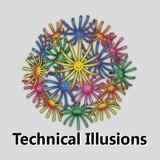If you have ever used a 3D printer before, then you know how boring it can be to wait in anticipation for your 3D model to print out. Often times I find myself just staring at my 3D printer, wondering, “when will this ever get 
Ryan Smith, lead 3D artist at a company called Technical Illusions, has created a holographic augmented reality interface for previewing 3D prints in his Makerbot Replicator. Sounds pretty darn futuristic, huh? Well it is. To do this, Smith started with a Cast AR headset, which is the product of an extremely successful Kickstarter campaign back in November, when they raised over $1 million from 3,863 backers. From there he drilled holes into the retroflective material on the Makerbot, using a laser cutter. This allowed him to place a semi-transparent overlay on the front
“Once you put them on, you can actually visualize what you are going to print before you print it,” explained Smith. “With this application I am able to reach in and kind of wrap my hand around the holographic style image and scale it up or scale it down, and see how it fits with different people. This is just the first thing we have used this for.”
Smith believes that this is the next evolution in 3D printing, especially for artists and engineers who rely on scaling. Visualizing an object within the printer is much easier than visualizing it on a computer screen, in which the scale can be skewed due to the screen’s size and resolution. Future applications for this technology could really run wild if developers are able to improve its implementation.
What do you think? Will this be a functionality of future 3D printers? Would you use such technology if you had it available? Let us know what you think at the 3DPB.com forum thread for about this article. Check out the video of Ryan Smith, showing just how this cool interface functions.
(Source: Hackaday.com )